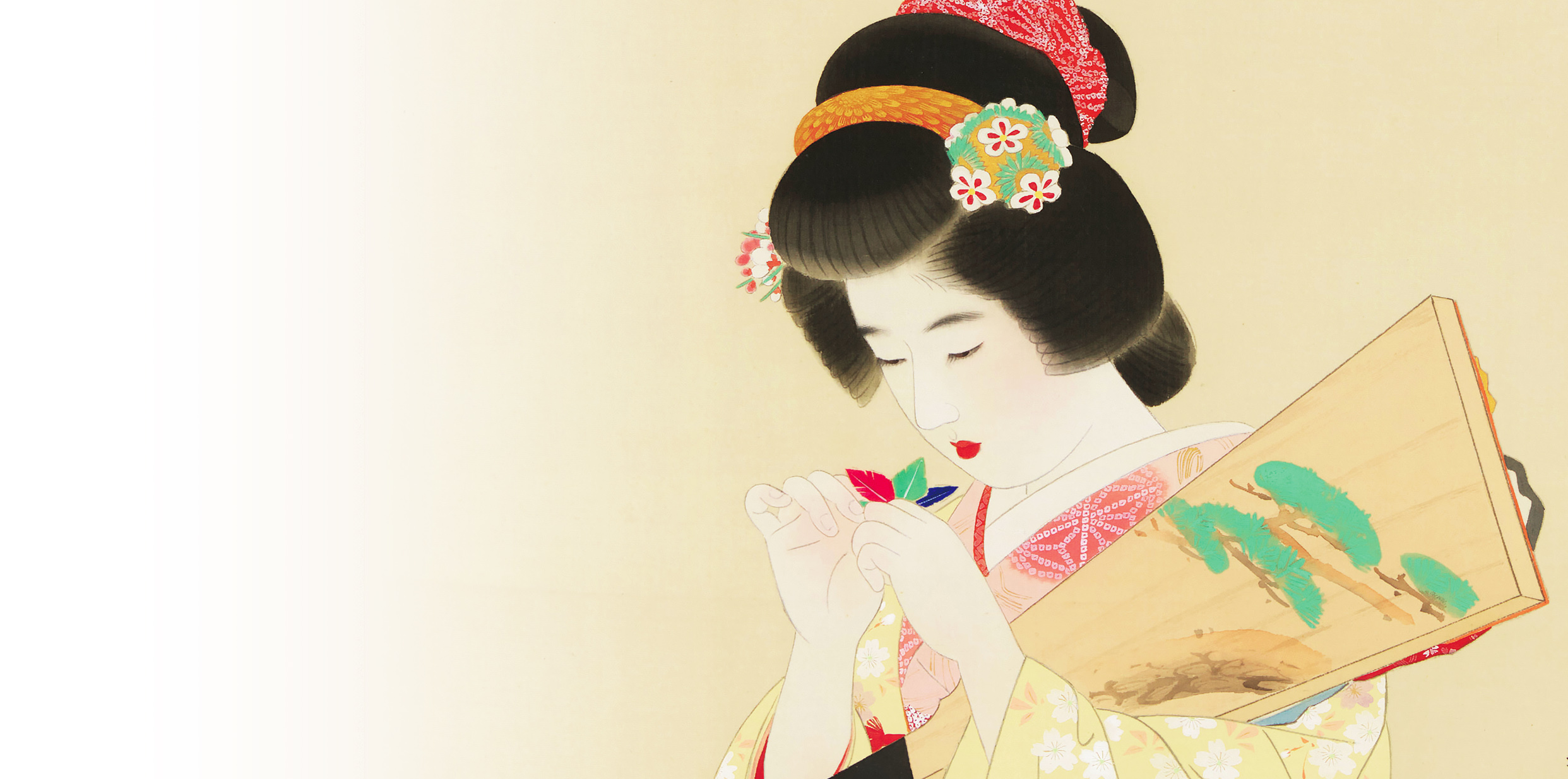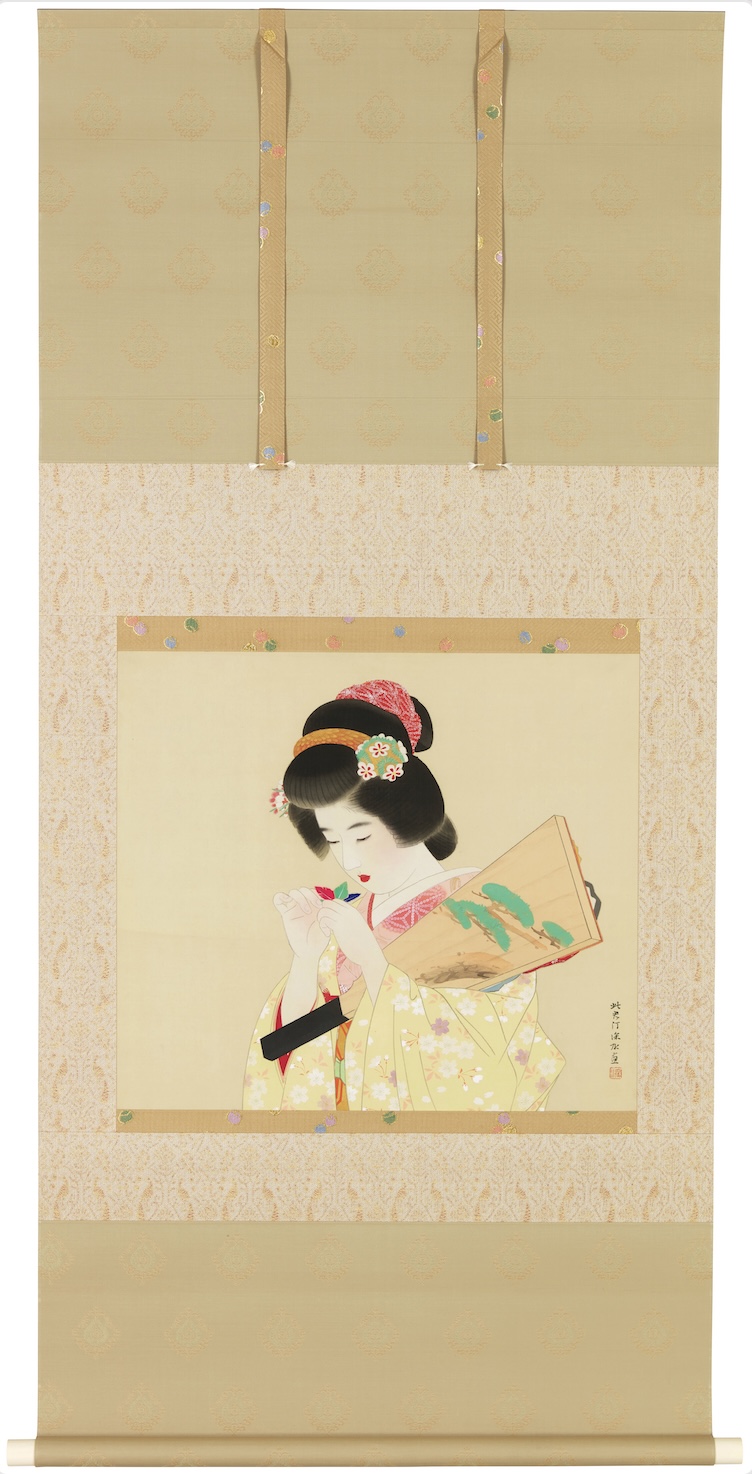vol.01 Happy New Year
Happy New Year.
My name is Mademoiselle Yulia.
I mainly do kimono styling, kimono wearing classes, DJing, and fashion-related projects. As you may have guessed, I am not particularly familiar with Japanese art, and I do not have any professional knowledge. But I love looking at Japanese art. Over the course of this year, I would like to talk about Japanese art from my perspective.
When I look at old Japanese photos and paintings, it is the dressing and pattern of the kimono that catches my eye. There are many points to learn from Japanese paintings, and the colors in the kimono pattern can tell us things like the season, occasion, period, etc., and it is fun to imagine the story.
The subject of this essay, Ito Shinsui’s “Hago” (Shuttlecock), renders a woman holding a pine-drawn shuttlecock. It is a perfect scene for the New Year.
Ito Shinsui was born in Fukagawa, Tokyo, and I believe Tokyo at the time retained traces of the Edo period when people would dress in kimonos. Fukagawa was especially known for their ‘chic’, “tatsumi geisha” during the Edo period. It was a hanamachi (geisha district) where these stylish geisha remained until the early Showa period.
For Shinsui, who grew up amidst the scenery of hanamachi, the appearance of a beautiful woman in kimono may have been a familiar sight.
The model in this painting has fluffy eyebrows in a “childish” appearance, with cute hair ornaments like tsumami kanzashi (ornamental hairpins) and comb, and a red kanoko shibori (cloth dyed in a dapple pattern). She wears a kimono with Asanoha (a pink hemp leaf) pattern (While the hemp leaf pattern is now known for its appearance in “Demon Slayer: Kimetsu no Yaiba”, in the Edo period, it was a pattern that was very popular among the young women who followed the kabuki actress “Yaoya Oshichi” (greengrocer Oshichi), and has since been a great symbol of youth and femininity.)
In addition, although the scenery is not drawn, I assume that the weather is cold from her pink cheeks and fingertips. From the sight of her haori (a jacket worn over a kimono) and her playing outside, I imagine she is a teenage girl coming out to the garden or doorstep.
In writing this article, I read an interview with Shinsui’s daughter Asaoka Yukiji, and there was an anecdote about him closely observing people in kimonos passing by the road. There is no doubt that Shinsui gave life and character to the people he painted through their kimonos and ornaments, and it makes me realize those were the values and feelings of Japanese people at the time.
Mademoiselle Yulia
Mademoiselle Yulia rose to prominence as a DJ and singer in her teens. In recent years, she has grown widely active as a kimono stylist, model, columnist, awards judge, and has become the face of numerous global campaigns of widely known brands. Yulia graduated from Kyoto University of the Arts in 2020 and styled the visual campaign for the Victoria & Albert Museum’s exhibition, Kimono -Kyoto to Catwalk-.
https://yulia.tokyo/


